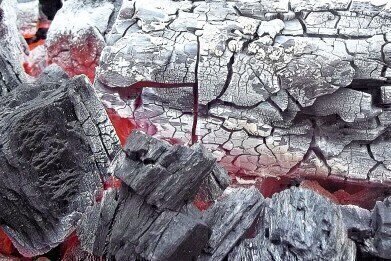Air Clean Up
Can Charcoal Absorb Pollution?
Mar 13 2019
A new study has demonstrated that charcoal has the ability to absorb certain pollutants from the atmosphere, potentially boosting air quality, mitigating the effects of climate change and providing an effective form of crop fertiliser. The report, which was published in the scientific journal Nature Communications, was authored by two scientists from Cornell University in collaboration with the University of Saskatchewan and made some ground-breaking discoveries.
Through their use of X-ray spectroscopy, Rachel Hestrin and Johannes Lehmann were able to determine that charcoal can absorb significant amounts of nitrogen from the air pollutant ammonia. While ammonia is an important component of agricultural fertiliser, it can become a damaging contaminant if it is allowed to escape into the atmosphere, so its removal via the use of charcoal could serve farmers and environmentalists a double purpose.
A boon and a bane
Crucial in delivering nitrogen to plants and crops, ammonia forms an integral part of many fertilisers. However, if it is allowed to leach into the air, it can react with other contaminants to create particulate matter (PM) and nitrous oxide (N20). The former is capable of infiltrating human lungs and posing a serious risk to health, while the latter can contribute significantly to climate change.
Ammonia emissions have been on the increase in recent years; in Canada, for example, emissions have risen steadily by 12% over the last three decades. 90% of those emissions are caused by the agricultural industry, given the ubiquity of ammonia in manures, slurries and other forms of fertiliser.
Naturally-occurring solutions
The conundrum over how to retain ammonia’s crop-aiding properties whilst removing its environmentally-dangerous ones has prompted scientists to investigate more eco-friendly forms of agriculture, including the use of digestate as an organic fertiliser. However, Hestrin and Lehmann’s research has taken a sideways step on the issue, seeking to complement existing methods via the use of naturally-occurring charcoal.
By using the Canadian Light Source (CLS) at the University of Saskatchewan, they were able to determine that charcoal absorbed the nitrogen from airborne ammonia even at ambient temperatures - something which had not been uncovered by previous studies.
A game-changer
“The CLS beamline provided the best method to investigate how charcoal can retain nitrogen from ammonia,” explained Hestrin. “Discovering that nitrogen was retained through a variety of covalent bonds was a real game-changer in our research. It implies that nitrogen captured from compost or manure might be less susceptible to loss through leaching or volatilization than we previously thought.”
Given that up to half of the nitrogen stored in ammonia-based fertilisers is regularly lost to the atmosphere, the authors’ discovery of a sustainable solution for ammonia removal could be a real breakthrough when it comes to eco-friendly agriculture. Not only can its adoption mitigate climate change, but it could also provide a slow-release fertiliser that won’t harm the environment.
Events
May 05 2024 Seville, Spain
May 13 2024 Munich, Germany
May 23 2024 Beijing, China
May 23 2024 Beijing, China
Jun 10 2024 Algiers, Algeria














